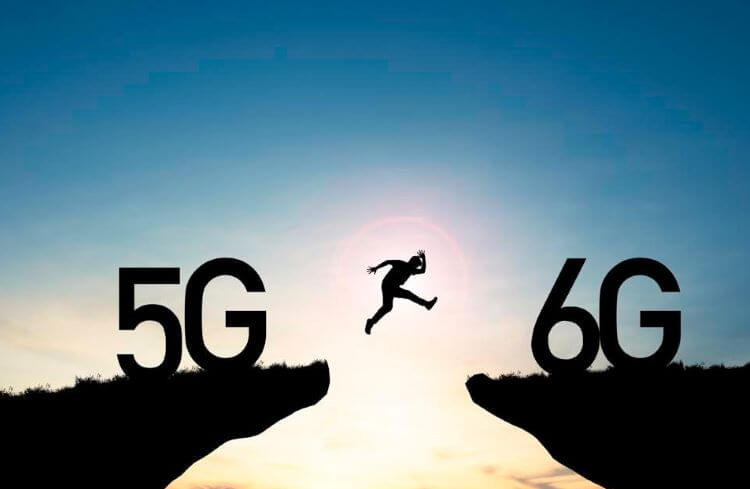Compared to the 5G technology, what are the challenges and changes of 6G?

1. From the possibility to the certainty
In the past, the services provided by mobile internet is filled with uncertainties and instabilities because of the specific attributes of Internet Protocol. In 4G era, these services can easily satisfy the subscribers. After all, slight network latency and packet lost could not affect the users experience of watching videos and shopping online.
However, 5G and 6G network will expand to all industries even all things, which requires the certainty of providing low latency and high reliability. This is the reason why network slicing, MEC and relevant technologies is introduced in 5G to offer the end-to-end network services capability guaranteed by SLA (Service-level agreement).
It is believe that the certainty of network services will be enhanced in 6G era to adapt to various scenarios of all sorts of industries.
2. Openness and customization
On one hand, as we all know, the key spirit of Internet is openness and sharing, which facilitates the development of Internet. On the other hand, deploying exclusive technology, the ecosystem of mobile communication network limits its evolution to some extent.
Stepping into the 5G era, in order to enable all sorts of industries to be involved in the digital transformation, mobile network should promote the integration of CT and IT positively to help explore more innovative applications in all industries.
The capability of openness and customization will evolve in 6G era, which can support flexible and agile services with the API interfaces for industrial customers to meet the needs of deploying tailor-made network and customized applications.
3. Artificial intelligence network
Nowadays, AI (Artificial Intelligence) has been already applied in several areas such as AI images identification, voice identification, automated translation and so on. For one thing, with the development of network services, higher requirements of network latency, reliability, users experience are needed. For another thing, the more complicated is the network, the more challenging is the process of maintaining and enhancing the network KPIs by traditional operation. To overcome these challenges, operators and equipment vendors are trying to introduce AI into the network to facilitate the network automation and intelligent transformation.

However, it requires massive data and computing resources to exert the value of AI engine at the maximum. Therefore, the future artificial intelligence network in 5G and 6G era needs the interaction between AI and network .
4. 100% Coverage
You can lead a convenient and easy life with a mobile phone today, but there are still over three billion people worldwide can not access to the Internet. The failure of constructing network in remote areas is caused by the high cost of deploying base stations and optical fiber cables as well as the geographical condition.
To achieve the goal of 100% coverage in the world, deploying the space-earth integration network is necessary in 6G era. To deploy space-earth integration network, base stations should be set on the platform of upper stratosphere and the LEO satellite, which can fully provide network signal to some remote areas. In general, this solution explores the possibilities of various emerging applications.
5. Terahertz communication
Terahertz frequency band refers to the frequency band from 100GHz to 10THz, which will be exploited in 6G era. Having wide bandwidth, it has never been used ever before. That means it can be exploited with no limitations.
However, it is estimated that the terahertz in 6G era will have the same problems as the millimeter wave today: weak capability of covering, high cost of deploying network, the premature ecosystem of terminals and so on, which need to be solved by the whole telecom industry together.
6. Perception and location
For now, the radio spectrum is used by mobile operators to be applied in telecommunication. But in 6G era, radio spectrum can not only be used in telecommunication, but also the function of sensor and location, providing services like communication, environment perception and location tracing, which can enable more emerging applications.
For example:
· The radio signals can identify the posture and gesture as well as the surrounding environment to enrich and enhance the user experience.
· Maintain the stable operation of smarty city and all industries by perceiving the surrounding environments of moisture, temperature, vibrancy and other elements.
· Explore new services with precise location
7. Make the best use of spectrum
As the valuable resource, radio spectrum is the significant carrier of innovation in digital society. In mobile network era, countries create the system of authorizing and distributing spectrum. This system promoted the development of network in the past, but it gradually caused the waste of spectrum.
Therefore, the sharing technology of dynamic spectrum will be studied in 6G era. Introducing AI, block chain and relevant technologies, the wireless industry is trying to control and distribute the spectrum more intelligently and flexibly. Meanwhile, Massive MIMO is evolving to elevating the efficiency of using spectrum.
8. Network security
Network security plays a crucial role in the evolution of digital economy. In 5G era, the 5G value includes these elements: low latency, high reliability, wide bandwidth and particularly network security.

Entering into 6G era, PQC (Post-quantum Cryptography) as well as QKD (Quantum Key Distribution) and other technologies will be applied in network to ensure the absolute network security.
9. Flexibility, redundancy and self-healing capability
With the diverse applications of 5G/6G in all industries, 5G/6G technology is the solid basis of supporting digital manufacture, operation and administration, which requires higher standard of network reliability and stability.
All roles in telecom industry should devote to constructing a flexible, redundant and self-healing network, which is able to provide stable network services when the network breakdown occurs.
10. Low-carbon transformation
Promoting low-carbon transformation is the joint objective of the world and the essential trend of ICT industry. Confronted with the drastic increasing of network throughput and rising resources consumption, for operators, deploying low-carbon and energy-saving network is the inevitable measure of lowering OPEX and the responsible behaviour of performing social duties.
In the future, the intelligent network with end-to-end AI and perceptive capability will be able to help operators achieve the goal of energy saving.

